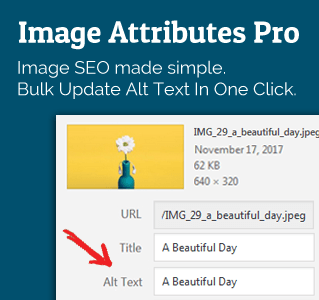A guest post by Gary Barzel. If you wish to write one, check out the guest-posting guidelines and details.
Building up a successful blog from scratch takes a significant amount of patience and hard work. While many new bloggers may understand that providing useful, quality content is important, the truth is that producing content is only just the beginning. If you want to maintain a successful blog, then you will need to juggle a relatively long list of time consuming tasks, such as networking with other professionals and niche bloggers, engaging readers by responding to post comments as well as reading and commenting on other blogs, promoting your work, exchanging links, and keeping your social network accounts active.
The point is that even with all the time-saving apps and tools out there for busy bloggers, blogging is still a commitment that can easily suck away your time and energy, and that is the same time and energy you could be using to run the other aspects of your business.

Moreover, what do you do when your blog is not meant to be a priority but only a periphery support for your business, such as by providing fresh, relevant content on your site to improve its performance with search engines or by funneling traffic to your website where a possible sales conversion can happen? How can you still maintain a successful, relevant blog without being run by it? Here are four points to keep in mind:
1. Make sure that you have clear goals for the blog.
Before you write even one word or start to design the look and feel of your blog, you need to be very clear about what you want to get out of it. For example, will you be trying to generate income from any outside ads placed on the site, are you using the blog to draw your readers’ attention to your product or services, or are you using it to build up your professional writing portfolio? Moreover, you need to decide what subjects you plan on covering, who your targeted readership may be, and how much competition you may have from other bloggers.
Being able to adequately answer these questions is an important first step that will help to keep you focused and ensure that any blog-related activities are bringing you closer to your original goals.
2. Identify what tasks need to be done, and schedule them around your other commitments.
Once you have an idea about where you are taking the blog, you then need to make a list of all the steps that need to be accomplished to get things up and running, such as designing the layout and getting some initial content up.
You should also begin to determine what will be your daily and weekly commitment to the site after those initial steps have been taken care of and you are already starting to draw a readership. This includes the number of posts you intend to put up per week as well as your available time to write them, your social networking and promoting content, as well as the time spent on building relationships and links.
3. Sometimes it just pays to hire a ghost writer.
Even if you dislike handing over the reigns to another person, there are many instances where hiring someone else to create the content on your blog is appropriate Some typical reasons to consider include: if you are not naturally a good writer, you can write but you don’t like to, or you do not have enough time available to put up sufficient content.
Sometimes, you can use the content from guest posters to fill in any gaps, but it may be a while before people will express interest in writing for your blog especially if it is new.
4. Set benchmarks and re-evaluate how you are doing along the way.
As I mentioned above, maintaining a successful blog can be a drain on your available time and energy since it typically involves more than just putting up content. If these resources are limited, then it becomes all the more important that you get the greatest return on investment and weed out any unproductive activities.
One way to do this is to set realistic benchmarks and goals and set aside times to consistently evaluate how you are measuring up against them. You can use an analytics service, such as Google Analytics and Google Webmaster Tools which are both powerful, accurate, and free, to get much of this information. Some good benchmarks to consider include: the amount of traffic coming to the site, how long visitors remain on specific pages and on the site as whole, how your site ranks for specific keywords, and what is the rate of total traffic to sales conversion?
In short, by considering the above, you can prevent your part-time business blog from becoming a full-time headache.
The Author, Gary Barzel is the manager of business development for Fastupfront. Fastupfront offers business loan alternatives and working capital solutions for established businesses.






The primary objective of all blog producers should be to decide precisely how to build up the number of Internet guest traffic to the actual Internet site. One of the best ways of increasing traffic flow is through the effective use of search engines, which publish and advertise the most popular web sites on the Internet. In order to get a search engine to put your particular web site near the top of a visitor’s search, there are a couple of things that should be done.